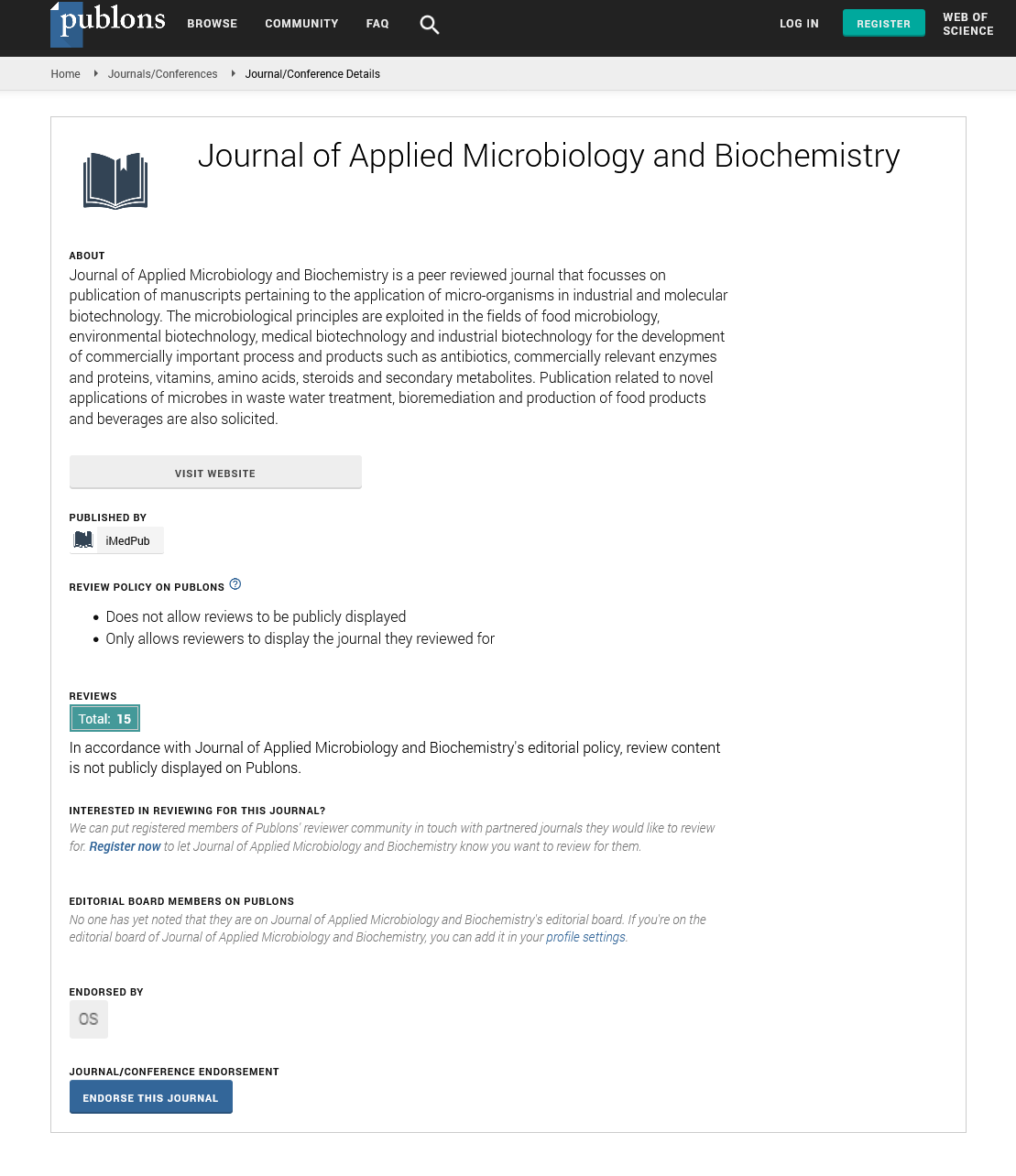Abstract
Biochemical Characterization of H2O2-Induced Oxidative Stress in E.coli
H2O2-induced toxicity led to remodeling of phospholipid (PL) in E. coli (DH5α) grown in LB medium at 25°C. A dose-dependent enhancement in conjugated diene content of total cellular lipid extract was observed when E. coli (DH5α) was grown in LB containing 1 to 10 mM H2O2. Elevated conjugated diene content was accompanied by a dose-dependent augmentation of cardiolipin (CL) by two fold with 20% depletion in sum total of phosphatidyl ethanolamine (PE) and phosphatidyl glycerol (PG) [(PE+PG)] content without altering total PL content. A 75% depletion of catalase activity and a dose-dependent variation in cellular free iron content were the oxidative-stress regulatory mechanism in E. coli (DH5α) in response to elevated level of extrinsic H2O2. These findings suggest that E. coli responds to H2O2-induced toxicity by regulating cellular-free iron content and by modulating cellular PL composition. As CL is known to be augmentated in multiple stress conditions, we hypothesize that H2O2-induced augmentation in CL content of E. coli (DH5 α) is a regulatory mechanism to survive oxidative stress. Our findings revel that exogenous H2O2 induces a lipid-mediated oxidative stress regulatory mechanism in E. coli.
Author(s): Santosh Kumar Sahu and Himadri Gourav Behuria
Abstract | Full-Text | PDF
Share This Article
Google Scholar citation report
Citations : 259
Journal of Applied Microbiology and Biochemistry received 259 citations as per Google Scholar report
Journal of Applied Microbiology and Biochemistry peer review process verified at publons
Abstracted/Indexed in
- Google Scholar
- China National Knowledge Infrastructure (CNKI)
- Cosmos IF
- Directory of Research Journal Indexing (DRJI)
- Publons
- Secret Search Engine Labs
Open Access Journals
- Aquaculture & Veterinary Science
- Chemistry & Chemical Sciences
- Clinical Sciences
- Engineering
- General Science
- Genetics & Molecular Biology
- Health Care & Nursing
- Immunology & Microbiology
- Materials Science
- Mathematics & Physics
- Medical Sciences
- Neurology & Psychiatry
- Oncology & Cancer Science
- Pharmaceutical Sciences


